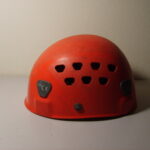If you’ve ever envied cyclists who can breeze down a street with hands lazily lolling at their sides, here is your chance to discover their secret. Riding a bicycle requires a great deal of balance and coordination, but riding a bicycle without holding onto the handlebars takes a cyclist’s skills to the next level. To master this requires patience, and above all, safety. Never attempt this for the first time without wearing a helmet, and always be aware of your surroundings.
That being said, this talent can difficult to learn, yet will become second nature once you manage to get the hang of it. It helps to already by a competent cyclist who can turn, break, and otherwise maneuver without falling over. If you still use training wheels, please graduate to conventional bike-riding before attempting to ditch your handlebars. Once you feel comfortable with your cycling abilities, make sure you have a solid sense of balance both on wheels and on the ground. It helps to practice some yoga poses that will strengthen core muscles and decrease your changes of falling. These poses will foster a synergistic connection between your voluntary muscles and the balancing centers within your inner ear. Your inner ear, particularly the fluid-filled, semicircular canals, uses the same technology as a leveler to help the brain coordinate your body’s orientation in space. An example of a pose that effectively accomplishes this is called “Tree.” Stand tall with one foot planted on the ground, and the other lifted and tucked into the inner thigh above the knee joint. Hold hands with palms pressed together close to your heart and try to maintain balance while focusing your gaze on your fingertips. Difficult isn’t it?
What does this have to do with riding a bike sans handlebars? Everything! Once you master kinesthesia, or the notion of knowing were one’s body is oriented in space, giving up your handlebars should be a piece of cake. When first starting out, make sure you’re on a solid, relatively flat surface. No cracked asphalt, no gravel, and no grass or Astroturf (landing on a hard surface shouldn’t be a concern since you’re fully garbed in protective gear…right?). A slight downgrade is preferable as it helps to propel you forward. Do not be timid and attempt to let go of your handlebars when biking at a scant four miles an hour. When first starting out, it helps to maintain a slightly faster speed and use your legs to power you forward. The same principle applies to a bucket being swung over one’s head. If you’ve ever tried this, you know that the contents of a bucket will not fall out, even when upside down, as long as you swing it relatively fast. As soon as the bucket falls below a certain speed, however, it loses its centrifugal motion, and things topple onto your head. Although a cyclist exhibits a more linear path of motion, he or she will still be more susceptible to the pull of gravity when traveling too slow. So maintain your speed, sit up straight, and begin to pulse your hands on and off, on and off.
Eventually, as you become more and more comfortable, you can experiment with cruising and leaning into turns. This is only for when you have mastered the above, and can ride indefinitely without having to grip the bars. When you become better, you’ll notice that you can ride at a slower pace, and even shift your weight slightly from side to side. When cruising, it’s important to keep one foot extended and positioned at the very bottom of the pedal’s cycle as opposed to having feet level with each other (think six and twelve o’clock instead of nine and three o’clock). This lowers your center of gravity and decreases your chances of falling. The same applies for when you attempt to turn. Always lean your body away from the turn, with your feet in the same position, to maintain your balance. Don’t be frustrated if you can’t master this all in one day, baby steps are key.



